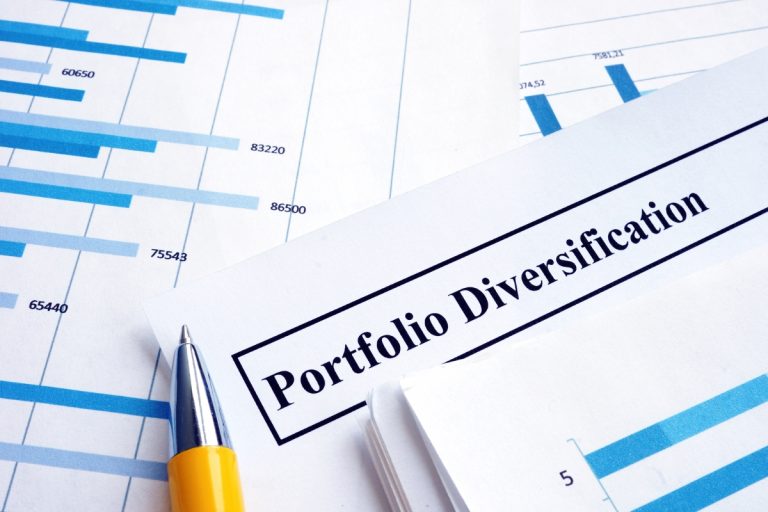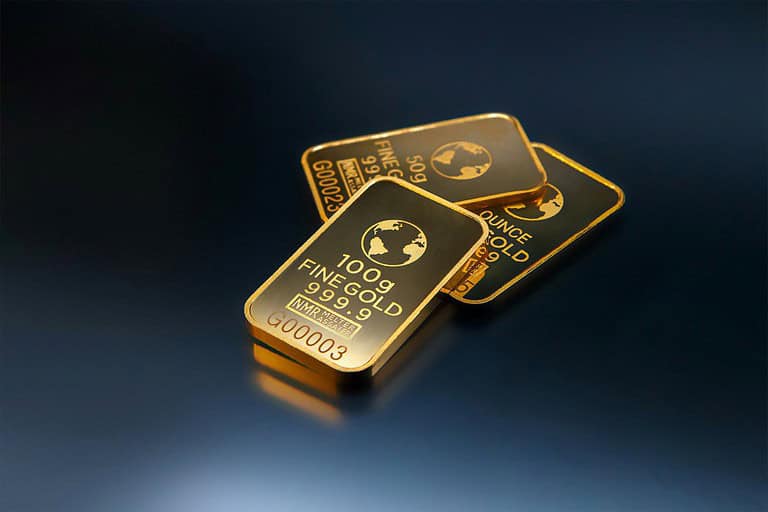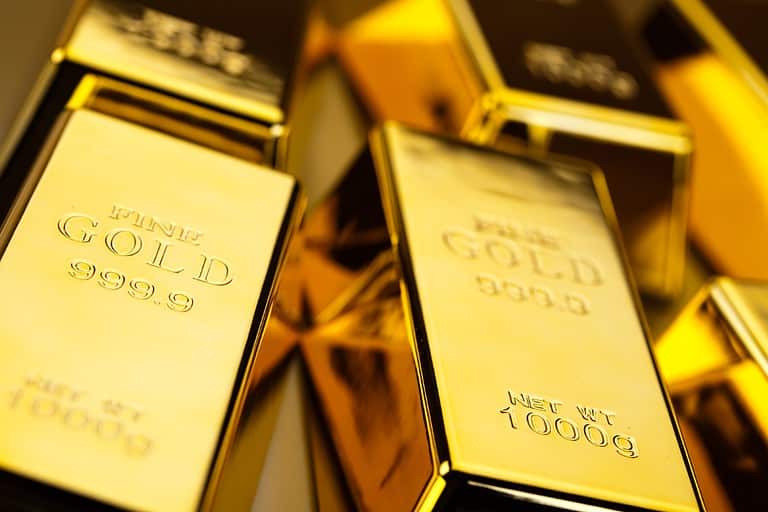A gold IRA rollover refers to the process of transferring funds from an existing retirement account, such as a Traditional IRA (Individual Retirement Account), Roth IRA, 401(k), or another qualified retirement plan, into a specialized IRA that allows for the inclusion of physical gold and other precious metals.
This type of retirement account is designed to offer individuals an avenue to diversify their investment portfolio by holding tangible assets like gold, silver, platinum, and palladium, in addition to the traditional investment options.
Benefits of a Gold IRA Rollover
A gold IRA rollover offers several benefits that can make it an attractive option for investors looking to diversify their retirement portfolio and add a layer of security. Here are some key benefits of a gold IRA rollover:
1. Diversification: Adding physical gold and other precious metals to a retirement portfolio enhances diversification by including an asset class with a historically low correlation to traditional financial investments like stocks and bonds. This diversification can help reduce overall portfolio risk and improve the potential for stable returns.
2. Hedge Against Economic Uncertainty: Gold has a long history of serving as a hedge against economic instability, geopolitical turmoil, and market volatility. During times of economic downturns or global uncertainty, gold’s value often remains relatively stable or even increases, providing a safeguard for retirement savings.
3. Inflation Protection: Gold has demonstrated its ability to preserve purchasing power over the long term, making it an effective hedge against inflation. As the cost-of-living rises, the value of gold typically rises as well, helping to maintain the real value of retirement savings.
4. Wealth Preservation: The stability of physical gold can help preserve wealth in the face of currency devaluation, financial crises, and other economic challenges. Holding tangible assets like gold ensures that a portion of the retirement portfolio is protected from potential market fluctuations.
5. Tangible Asset Ownership: Unlike paper assets that can be subject to market manipulation or economic downturns, physical gold represents tangible ownership of a valuable commodity. This ownership provides a sense of security and confidence in the investment’s inherent value.
6. Global Recognition: Gold is universally recognized and accepted as a valuable asset. This recognition makes it easier to trade or sell gold in various markets around the world, providing liquidity when needed.
7. Long-Term Stability: Gold’s historical stability and enduring value make it suitable for long-term retirement investing. It has maintained its worth over centuries, offering a reliable source of value even in changing economic landscapes.
8. Tax Advantages: Depending on the type of Gold IRA chosen (Traditional or Roth), there can be potential tax advantages. Traditional Gold IRAs offer the potential for tax-deferred growth, while Roth Gold IRAs offer the potential for tax-free withdrawals in retirement, as long as certain conditions are met.
9. Balanced Portfolio Strategy: Including a Gold IRA alongside traditional financial assets can create a balanced investment strategy that capitalizes on the strengths of both asset classes. This approach helps investors mitigate risks associated with market volatility and economic uncertainties.
10. Alternative to Traditional Investments: For investors who are concerned about stock market volatility or economic instability, a Gold IRA provides an alternative investment avenue that is not directly tied to the performance of traditional financial markets.
11. Safe Haven Asset: Gold is often considered a safe haven asset, sought by investors during times of market turmoil or when there are concerns about currency stability. Its status as a safe haven contributes to its appeal within a retirement portfolio.
12. Potential for Portfolio Growth: While gold may not provide the same explosive growth potential as certain high-risk investments, it can contribute to portfolio growth over the long term, especially when used strategically in conjunction with other assets.
It is important to carefully evaluate these benefits in the context of your own financial goals, risk tolerance, and retirement timeline. Consulting with financial advisors who specialize in precious metals and retirement planning can help you make an informed decision about whether rolling over your retirement account aligns with your investment objectives.
Types of Precious Metals Eligible for IRA Accounts
The following types of precious metals are generally eligible for inclusion in a gold or precious metals IRA, provided they meet the specific requirements and regulations set by the Internal Revenue Service (IRS):
Gold
- Gold Coins: Examples include American Gold Eagles, Canadian Gold Maple Leafs, South African Krugerrands, Australian Gold Kangaroos, and Austrian Gold Philharmonics.
- Gold Bars: Generally, gold bars produced by recognized and accredited refiners or mints and meeting IRS fineness standards are eligible.
Silver
- Silver Coins: Eligible silver coins include American Silver Eagles, Canadian Silver Maple Leafs, Austrian Silver Philharmonics, Mexican Silver Libertads, and British Silver Britannias.
- Silver Bars: Similar to gold bars, silver bars meeting IRS standards and produced by reputable refiners or mints are eligible.
Platinum
- Platinum Coins: Examples of eligible platinum coins are American Platinum Eagles, Canadian Platinum Maple Leafs, and Australian Platinum Koalas.
- Platinum Bars: Platinum bars meeting the necessary fineness criteria and produced by recognized sources can also be included.
Palladium
- Palladium Coins: While less common, certain palladium coins like Canadian Palladium Maple Leafs are eligible for inclusion.
- Palladium Bars: Eligible palladium bars must meet IRS purity standards and come from reputable refiners or mints.
It is important to emphasize that the eligibility of specific precious metal products can change, and the IRS periodically updates its guidelines. Therefore, it is crucial for investors considering a gold IRA rollover to verify the current list of eligible precious metals with their chosen custodian or financial advisor. Additionally, investors should ensure that any chosen products meet IRS requirements for fineness and authenticity.
Due diligence is essential when selecting precious metals for a gold IRA to ensure that the investments comply with IRS regulations and contribute to a well-structured retirement portfolio. Consulting with financial professionals who specialize in precious metals and retirement planning can help ensure that the chosen assets align with your goals and risk tolerance.
Gold IRA Rollover Process
The gold IRA rollover process involves transferring funds from an existing retirement account, such as a Traditional IRA, Roth IRA, 401(k), or another qualified retirement plan, into a specialized individual retirement account that allows for the inclusion of physical precious metals like gold, silver, platinum, and palladium. This process includes:
1. Research and Choose a Custodian:
Begin by researching and selecting a reputable gold IRA custodian that specializes in precious metals IRAs. Custodians are responsible for facilitating the rollover process and ensuring compliance with IRS regulations.
2. Open a Gold IRA Account:
Work with the chosen custodian to open a new gold IRA account. The custodian will provide the necessary paperwork and guidance to establish the account.
3. Fund the Gold IRA:
Transfer funds from your existing retirement account(s) into the newly established gold IRA. This can typically be done through a direct transfer or a trustee-to-trustee transfer to ensure that the funds are moved without triggering taxes or penalties.
4. Choose Precious Metals:
Once the funds are in your account, you can work with the custodian to select the types of eligible precious metals you want to include in your portfolio, such as gold bars, coins, or bullion.
5. Purchase Precious Metals:
The custodian will facilitate the purchase of the selected precious metals on your behalf using the funds within the gold IRA. The purchased metals will be held in a secure IRS-approved depository.
6. Secure Storage:
The purchased precious metals will be securely stored in an IRS-approved depository. The custodian will ensure that the metals are stored in compliance with IRS regulations.
7. Account Administration:
The gold IRA custodian will handle the administrative tasks related to the account, including reporting, recordkeeping, and ensuring that all IRS guidelines are followed.
8. Ongoing Management:
As the account owner, you can monitor the performance of your gold IRA and make decisions about rebalancing or adjustments based on your investment strategy and goals.
9. Distribution and Withdrawal:
When you reach retirement age, you can begin taking distributions from your gold IRA. The taxes on distributions will depend on whether it is a Traditional Gold IRA or a Roth Gold IRA.
Since the process to rollover a retirement account to gold involves compliance with IRS regulations and rules, any mistakes or missteps could lead to tax implications or penalties. Therefore, it is highly recommended to work with experienced professionals, including financial advisors and gold IRA custodians, who are knowledgeable about the process and can guide you through each step to ensure a smooth and compliant rollover.
Gold IRA Costs
Setting up and maintaining a gold IRA involves various fees that investors should be aware of when selecting a custodian. Understanding the fee structure is essential for making informed decisions and ensuring that the overall cost does not erode the potential benefits of your gold IRA investment. Here are some common fees associated with gold IRAs:
- Account Setup Fee: This fee covers the administrative costs of opening a gold IRA account with the custodian. It might include processing paperwork, establishing the account, and setting up necessary arrangements.
- Annual Maintenance/Administration Fee: Custodians may charge an annual fee for maintaining and administering your gold IRA account. This fee covers services such as account reporting, recordkeeping, and customer support.
- Storage Fee: Given that gold IRAs involve physical precious metals, storage fees are a significant consideration. The custodian charges a fee for securely storing your gold, silver, platinum, or palladium in an IRS-approved depository.
- Transaction Costs: Transaction costs may apply when you buy or sell precious metals within your gold IRA. This fee covers the custodian’s administrative and operational expenses associated with processing transactions.
- Wire Transfer Fees: When transferring funds to or from your gold IRA, custodians might charge wire transfer fees. These fees cover the cost of electronic fund transfers between financial institutions.
- Precious Metals Markup/Commission: Some custodians may charge a markup or commission on the purchase price of precious metals. This fee can vary based on the type and quantity of metals purchased.
- Custodial Services Fees: These fees might include charges for services such as processing paperwork, providing account statements, and facilitating transactions.
- Investment Product Fees: Depending on the specific precious metals products you choose for your gold IRA, there might be associated fees based on the type of coins, bars, or bullion you invest in.
It is important to note that fee structures can vary significantly between custodians, so conducting thorough research is crucial. Here are some tips for you:
- Review Fee Disclosures: Custodians are required to provide fee disclosure documents. Review these documents carefully to understand the breakdown of fees and the total cost of maintaining your gold IRA.
- Ask Questions: Do not hesitate to ask custodians about their fee structure, including any potential hidden fees. A reputable custodian should be transparent and willing to provide detailed information.
- Compare Custodians: Compare fee structures across different custodians to ensure you are getting competitive pricing for the services provided.
- Consider Services Offered: While fees are important, also consider the quality of services offered by the custodian. A lower fee might not be beneficial if the custodian lacks reliability or expertise.
- Calculate Long-Term Costs: Consider the impact of fees on your overall returns over time. Lower fees can significantly affect your long-term investment outcomes.
- Seek Professional Advice: Consult financial advisors or experts who specialize in precious metals and retirement planning to help you understand the fee structure and make informed decisions.
By carefully evaluating and understanding the fee structure associated with setting up and maintaining a gold IRA, you can ensure that your investment remains cost-effective and aligns with your financial goals.
Top Gold IRA Custodians
How to Choose the Best Gold IRA Rollover Company
- Consider the company’s reputation and track record. Look for a company with an excellent reputation and positive customer reviews.
- Check the company’s fees and expenses to ensure that you will get the best deal available.
- Consider the investment options available. The company should offer a wide range of investment options to suit your specific investment needs. Also, ensure that the company is licensed and regulated properly. Working with a licensed and well-regulated company guarantees the safety of your gold investments.
- Consider the company’s customer service. A reliable and friendly customer service team can help you navigate the investment process smoothly.
By considering all these factors, you can make an informed decision when choosing the top gold IRA company.
Final Thoughts
Ultimately, the choice between gold IRAs, stocks, bonds, and real estate depends on an individual’s financial goals, risk tolerance, time horizon, and overall investment strategy. Gold’s unique attributes, such as its historical store of value and potential as a hedge against economic uncertainty, can make it appealing to certain investors seeking to diversify their portfolios and preserve wealth over the long term.




